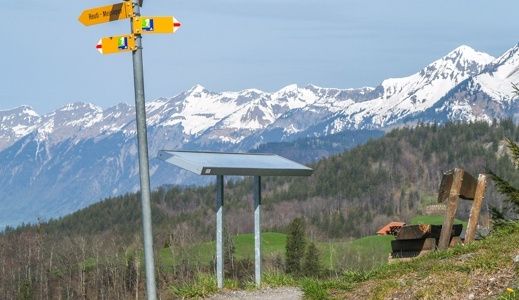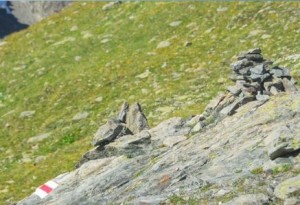Zermatt is without a doubt one of the famous and popular area for hiking. There are many trails for everyone, some with themes and some romantic. Once you are prepared for hiking at Zermatt, there are some rules you must remember and follow. By following the do’s and don’ts, hiking will be a pleasant and safe experience for everyone. Hiking is not an extreme sport but hiking in the mountains is not to be underestimated. High Alpine terrain is easily accessible in Zermatt, and anyone can get there and start hiking. This could be a dangerous situation in itself if unprepared and inexperienced. Unprepared and inexperienced hikers are more likely to run into trouble and every year, this results in many injuries and even casualties.
Do not leave the marked route. There are signposts and marks on rocks, fences, and other places to help hikers to find their way. Different types of trail have their own marks. Some trails may cross with wild animals and if there is a fence, please do not forget to close the fence once passed through. Do not enter fields unless there are clearly marked as part of the trail since wild animals are very delicate in Zermatt. Do not try to feed them no matter how cute they are and please do not scare the animals. Some get so terrified that they run and by running, they either run into trees or worse get so scared that they die. Some trails are not paved and they can be rocky with loose rocks or tree roots or even steep. Try to concentrate on the trail and stop to look around to admire the magnificent views.
Do not pause at a place with lots of loose rocks on a slope since a stone avalanche might have taken place at that point and it can happen again. Do not throw rocks down a slope. Even a very small stone can be very dangerous if they land on lower situated hiking trails. Without knowing, hikers below can get severely injured and by throwing rocks, it may even cause stone avalanche. Try to keep an eye on the weather since weathers up in high mountains can change rapidly. Try to adjust your plan and if the weather turns bad, if necessary, take the shortest route back to a nearby village. A pocket sized barometer seems to come in handy, but since air pressure varies with altitude, the weather forecasts provided by such devices become useless when taking it into the mountains. Forecasts on a mobile phone can be more useful.
Have the phone numbers of rescue services at hand, and contact them in case you need immediate medical assistance. Provide clear information about your location and if your phone does not work at your location, go and get help in the valley or the nearest mountain hut. Keep trying whether your phone can be used again while you are on your way down but do not hurry too much since it may cause another accidents. Try to leave someone with the victim if possible and provide the victim with food, drink and a blanket or something to keep them warm. Make sure that someone who is not hiking along knows which route you will take that day.
Do not wave to the helicopters unless you need help. This will prevent rescue helicopters from making an unnecessary landing. If you do need help, then wave with two arms shaping your body like the letter Y. Names of small locations may be spelled differently on maps and signposts. Even signposts along the way may use a different spelling for the same location so keep an eye. Do not throw away trash. This includes food. By throwing away food it can harm wildlife so try to take it with you and dispose it in the next village or at places where you will be staying. Try to greet other hikers. If you want to greet like the locals do, say “gruezi” which is Swiss German, “bonjour” in French or “buongiorno” in Italian, all depending where you will be hiking. By following these simple rules, just have fun and enjoy the breathtaking views high up in Zermatt.


